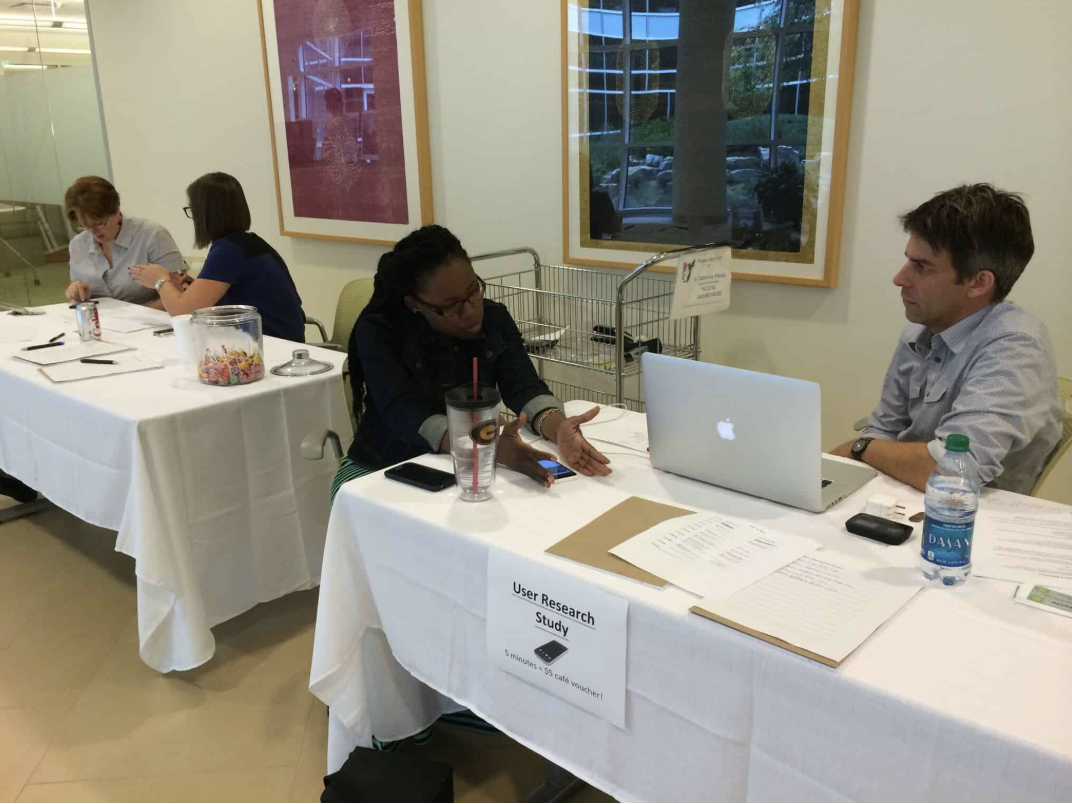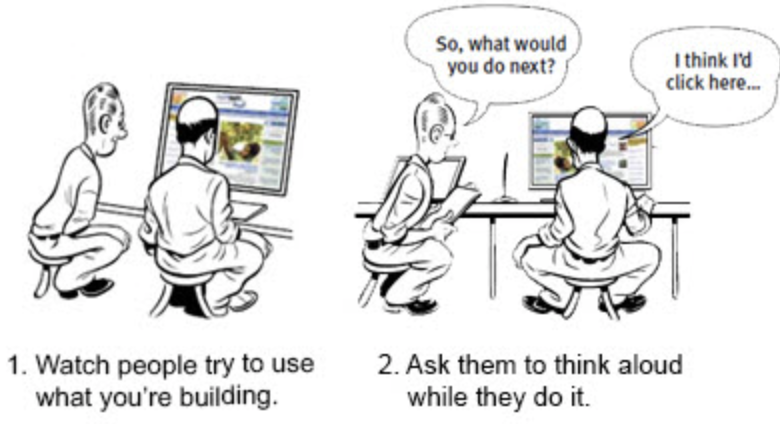Design Template by Anonymous
Why Usability Testing Matters
Usability testing ensures digital products work well for the people who use them. A feature-rich website may appear complete on paper, but if users struggle to navigate it or accomplish tasks, it fails in practice. Testing with real users uncovers these issues and provides designers with the insight needed to improve the experience.

A live usability test reveals how users respond to design decisions. Image courtesy of UXMastery.
One major benefit of usability testing is that it catches problems early, when they are faster and cheaper to fix. Design flaws that go unnoticed until after launch often require major rework. Testing in the design phase prevents these issues from escalating and allows changes to be made before development is locked in.
Designers and developers often make assumptions about what users know or expect. Testing challenges those assumptions by watching people interact naturally with a product. It shifts design from guesswork to evidence-based decisions, improving the interface through each round of iteration. Even small tests with a few users can uncover large pain points that would otherwise go undetected.

A developer reacts as a user completely misunderstands the design—highlighting the value of usability testing. Cartoon by Steve Krug from Don't Make Me Think.
Usability testing also improves accessibility. By including people with different abilities, teams can spot barriers that might prevent access. Whether someone uses a screen reader, keyboard navigation, or other assistive tools, testing ensures the product is inclusive and compliant with best practices in accessible design. Testing helps ensure that no user is left behind and that interfaces can accommodate a broad range of needs.
When users can complete tasks with minimal effort, they’re more likely to stay engaged. Clear, intuitive interfaces reduce cognitive load and allow users to focus on their goals. Better usability leads to higher satisfaction and fewer support requests, improving both retention and reputation. A seamless experience builds trust and makes the user feel confident in the product or service.
Usability testing helps validate both structure and content. Even well-written instructions or labels may confuse users if they appear in the wrong place or use unfamiliar language. Testing ensures every element of the interface contributes to clarity and ease of use. A button may be functional, but if it’s overlooked or misunderstood by users, it fails in its purpose. Direct feedback from real sessions helps fine-tune these details.

Observing users and encouraging them to think aloud reveals hidden friction points in the design. Cartoon adapted from Don't Make Me Think.
Testing doesn’t require a complex setup. Simple tools like screen recordings or video calls make remote sessions easy to manage. Even a handful of participants can uncover critical issues that affect the broader user base. Watching users struggle with a feature is one of the fastest ways to know where improvements are needed. Remote and unmoderated testing also allow teams to gather insights from geographically diverse users, expanding their understanding of different behavior patterns.
Usability testing also promotes collaboration. It gives designers, developers, and stakeholders a shared view of how users experience the product. Watching test sessions as a team encourages open discussion, informed decision-making, and shared responsibility for improvement. This collaborative process can streamline revisions and reduce internal debate by grounding conversations in observed user behavior.
By the time a product goes live, it should feel natural to its users. That outcome depends on intentional testing throughout the design process. Usability testing is not a one-time task—it’s a repeatable practice that ensures the end result serves its audience. A product built without usability input may work technically, but fail to connect. A product shaped by usability testing becomes not just usable, but meaningful.